Welcome to day 1 of milk paint madness week, milk paint basics.
For those of you who might be entirely unfamiliar with milk paint, this post is for you. But everybody, be sure to read to the end for details on today’s giveaway.
First of all let’s just establish that when I’m talking about milk paint, I’m talking about paint that comes in powder form and you mix it yourself with water when you’re ready to use it. Some of my favorite brands of milk paint include Miss Mustard Seed, Homestead House, The Real Milk Paint Co and Sweet Pickins.
Don’t be confused by General Finishes Milk Paint which is really an acrylic paint and not a milk paint at all.
Also, don’t be confused by The Real Milk Paint Co’s packaging. It looks more like a traditional paint can, but there is a bag of powder inside. There is also a marble inside which is a very clever tool for mixing your paint, but I’ll get to mixing in a minute.
Milk paint is made with only a handful of basic ingredients including milk protein, lime and pigment. It is non-toxic and has zero VOC’s. In other words, it is a very green product that is not harmful to the environment or to you while you’re using it (go here to read more about the green quality of milk paint). Since I paint a lot, I’m exposing myself to the products I use on a regular basis and I bet you are too. Don’t forget to take this important quality into consideration when choosing which products you’re going to use.
Milk paint in powdered form can be stored pretty much indefinitely as long as it is in a sealed container and stays dry. It doesn’t take up very much space on your shelf this way, which is an added bonus.
Although these days most of us use milk paint over a pre-existing finish and are delighted when it chips and crackles because of that resistance, historically milk paint was intended for use on raw wood. When used on raw wood, milk paint soaks into the wood much like a stain rather than sitting on the surface like other paints. That makes it incredibly long lasting and durable. When used on raw wood milk paint won’t chip or peel away.
So let’s talk about mixing your milk paint. The basic rule of thumb is to mix equal parts water to powder. However I like to mix darker colors a little thinner (more water, less powder) and lighter colors a little thicker (less water, more powder). But half and half is a good starting point.
You can also mix your paint really thin and use it as a wash. Or leave it thicker if you want to add some texture to your piece.
There are all kinds of methods for mixing your milk paint. Unlike Mr. Bond’s martini’s, it can be shaken OR stirred. This is where that marble comes in from The Real Milk Paint Co. If you like to shake your paint in a jar, throw the marble in the jar as well and it helps mix the paint beautifully. You can also choose to use one of those battery operated milk frothers to mix your paint (reserving it for paint use only of course). I’ve even heard that some people use a blender, but that seems like overkill to me.
I used to always shake my milk paint in a glass jar and the marble is pure genius for that. It was also a very environmentally sound practice. However, Mr. Q eventually got tired of washing out those jars for me (he does all of the dish washing in our house, we don’t have a dish washer). So I switched over to stirring my milk paint in a disposable solo cup with a plastic spoon. I purchased what may prove to be a lifetime supply of plastic spoons at a garage sale for a dollar and I haven’t run out yet.
Do you put the water in first, or the powder in first? Some say one and some say the other, but I don’t think it makes that much of a difference. However, if you put the powder in first, just be sure to mix all the way to the bottom. It’s sort of like making hot chocolate from a powder, you don’t want to get that overly chocolaty last swallow because a bunch of the mix was stuck at the bottom of your cup.
Should you use cold water or warm water? Again, I’ve heard both. I suggest meeting in the middle and using room temperature water.
I’ve also heard that sometimes well water may cause problems with milk paint. When I was in high school a friend of mine had orange hair from washing it with well water. So if your well water turns things orange, you might want to try using bottled water instead. But city water from the tap should be perfectly fine.
One thing to keep in mind about milk paint is that once it’s mixed with water it has a limited shelf life (no longer than one week). So obviously you don’t want to mix way more than you are going to need. I think this factor stresses people out unnecessarily. Over time you’ll develop a feel for how much paint you need, but in the meantime I have a little trick for you. For a typical piece of furniture like a desk or medium sized dresser, start with about a 1/2 cup paint mixed with a 1/2 cup water. Then start the first coat of paint on your piece and pay attention to how much of the paint you use.
Did you use all of it for the first coat? If so, mix the same amount again for the 2nd coat.
Did you run out? If so, mix a bit more the next time adding enough to finish the first coat and complete the 2nd coat.
Did you have way too much? You get the idea. As long as you have enough paint mixed to paint your final coat all from one batch you are going to be OK.
That being said, you can not mix a new batch of milk paint just to finish that one last drawer and expect it to match. It most likely won’t. So be sure your final coat of paint is all mixed at the same time (see an example of that here) .
Speaking of mixing, be sure to stir your milk paint frequently as you use it (that plastic spoon really comes in handy for this). Because this paint is all natural, the heavier pigments will sometimes fall to the bottom of your cup as you’re painting. This can result in some fairly obvious color differences between the beginning and end of your piece . The best way to prevent that is to give your paint a little stir every 10 minutes or so as you are painting.
Here’s one of the best milk paint tips I ever got; mix your paint first and then let it sit while you are prepping your piece to be painted. That gives the milk paint ingredients time to dissolve and blend while you are removing knobs, lightly sanding and then cleaning your piece.
Speaking of prep work, I recommend not skipping this step when using milk paint (actually, I recommend taking the time to prep your piece no matter what paint you are using). Especially the cleaning step. If there are any oils (or furniture polish) on your piece of furniture it will resist the paint, possibly by a lot. I like some chipping, but maybe not quite this much (check back later this week to learn how to get the perfect amount of chipping).
When buying a piece of furniture always ask the seller if they cleaned it up with anything recently. I often find that Craigslist sellers will put a coat of furniture oil on a piece to make it look good for pictures. If that’s the case, you want to be sure to clean that off before you start painting. I like to use TSP Substitute for that.
Also, don’t panic if your piece looks like the one above after the first coat of paint. If this happens to you, get out your shop vac and vacuum off the flaking paint. Sand the piece thoroughly, you don’t have to remove all of the paint just the lose stuff, but you also want to give the wood underneath some more ‘tooth’ to hold the paint so you don’t repeat the same result. Vacuum again after sanding, wipe the piece down and start over.
OK, so you’ve mixed your paint and you’ve prepped your piece. The next step is painting. This is the simplest part of milk paint. Because it’s thinner than most paints you don’t have to worry about brush strokes (although do keep an eye out for drips). You really can use just about any kind of paint brush and still get good results with milk paint. This may sound odd, but I find it less physically taxing to paint with milk paint versus other kinds of paint because it’s much lighter on your brush and it doesn’t really drag as you’re painting it on. I don’t think I can really explain that properly, but if you’ve ever gone from painting with milk paint to then painting with another paint you’ll know what I mean. It just feels like less work.
Another big bonus to milk paint is how quickly it dries. When painting a dresser I generally remove the drawers and paint them first, then move on the body of the dresser. By the time I’ve finished the body, the drawers are usually dry (unless it’s a super humid day). Because the paint dries so quickly, I often am able to complete a piece from start to finish in one day.
Milk paint coverage can be variable. It will depend on how thick or thin you mixed your paint, what color you are using and what color you’re covering up. I’ve gotten away with as little as one coat when using black or other very dark colors, but I’ve also needed at least three coats when using white over a dark wood.
Here’s a great tip regarding coverage. If you’re painting over a dark finish with a very light color, like white, start with a coat of paint in a mid-tone shade of grey first. Then move on to the white. You’ll get better coverage in fewer coats.
Don’t worry if you feel like your first coat of milk paint looks terrible. The first coat rarely looks good (with the exception of those dark colors). Move on to the 2nd coat and you’ll be amazed at how much better it suddenly looks.
Once your final coat of paint is dry you might notice that milk paint is a little rough to the touch. Get out your sanding block and some 220 grit sand paper and hand sand over the entire piece (I say you can count this as your cardio for that day). The finish will become smooth like butta’ and it will be time to move on to the topcoat, which is the subject of our post for tomorrow.
By the way, if you are a visual or auditory learner you can click here for a link to a great milk paint basics video by Marian Parsons, a.k.a. Miss Mustard Seed.
Now it’s time for the fun part, the prize!
Includes: Miss Mustard Seed Look Books 1 & 2, paint brush, whisk paint mixer, 4 colors of milk paint, Miss Mustard Seed’s Beeswax, Miss Mustard Seed’s Tough Coat Sealer. Thank you to Miss Mustard Seed, Homestead House and The Real Milk Paint Co for providing items for today’s giveaway!
The basic rules: to be eligible to win today’s prize leave a comment on this blog post telling me whether or not you’ve tried milk paint. Your comment must be left on the blog, not on Facebook. You are not required to follow my blog, although it would be awesome if you did!
Normally I make a point of answering every comment left on my blog. If someone takes the time to leave a comment, I like to acknowledge that. But I usually only get 10 to 20 comments so it’s easy to fulfill that promise. But I’m guessing that I’ll get many more comments on these posts so I’m going to warn you up front that I won’t be answering each one. That helps make it easier for me when it’s time to pick a winner too, so I hope you guys will cut me some slack on that this week.
I will randomly draw the name of a winner for today’s prize from all of the comments left on this post by Saturday, April 7, 2018 at the stroke of midnight. You are eligible to win each day, so if you leave a comment on each day’s post, your name is eligible to be drawn for each prize.
The fine print: no purchase necessary, you must be 18 years of age or older to win, void where prohibited by law, the number of eligible entries received determines the odds of winning, approximate retail value of prize is $140, if the prize is not claimed by Friday, April 13, another name will be drawn at random to win, blah, blah, blah.
Be sure to check back tomorrow for the next segment of milk paint madness, and in the meantime remember to pin today’s post for future reference.

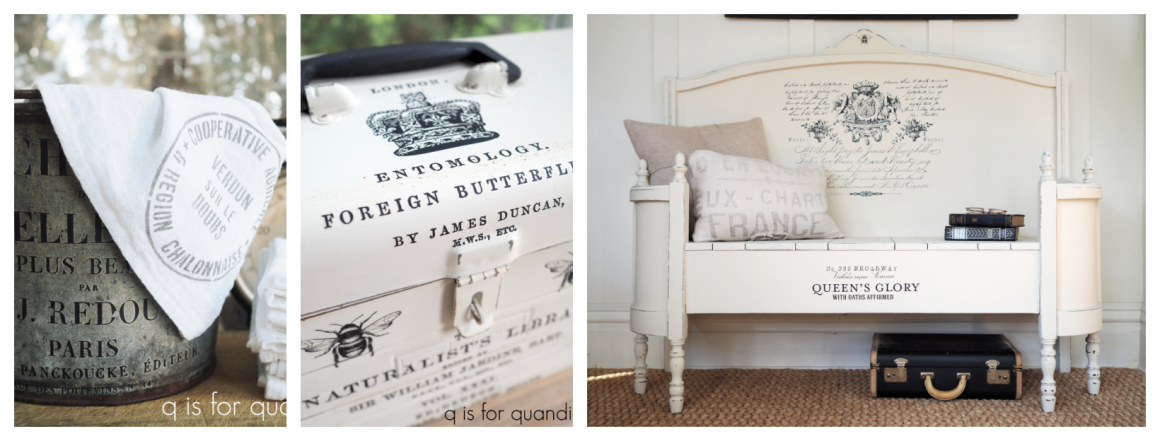
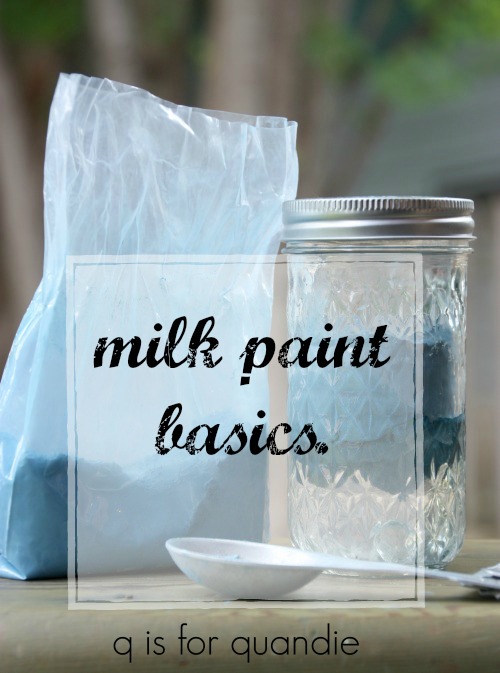
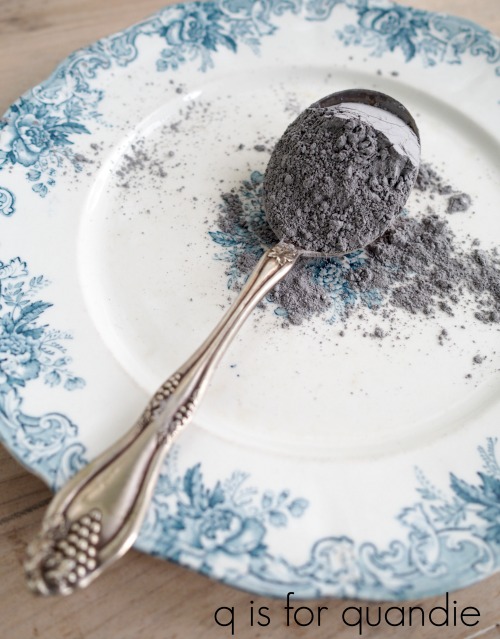


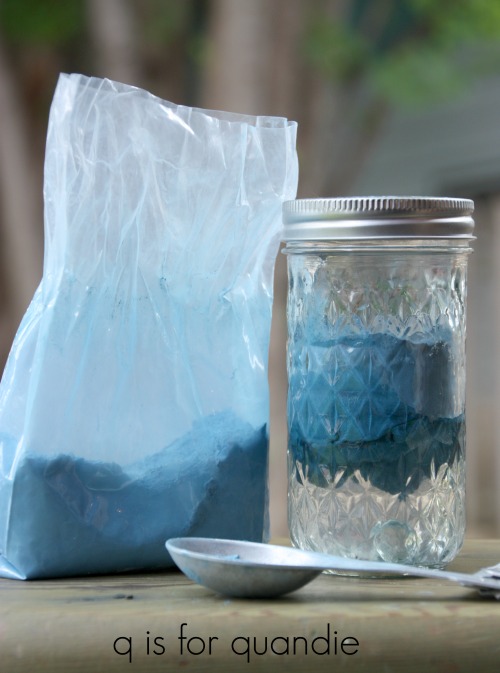
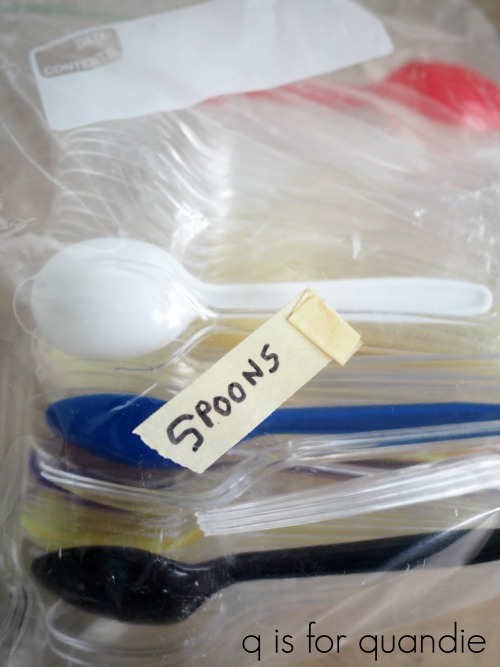
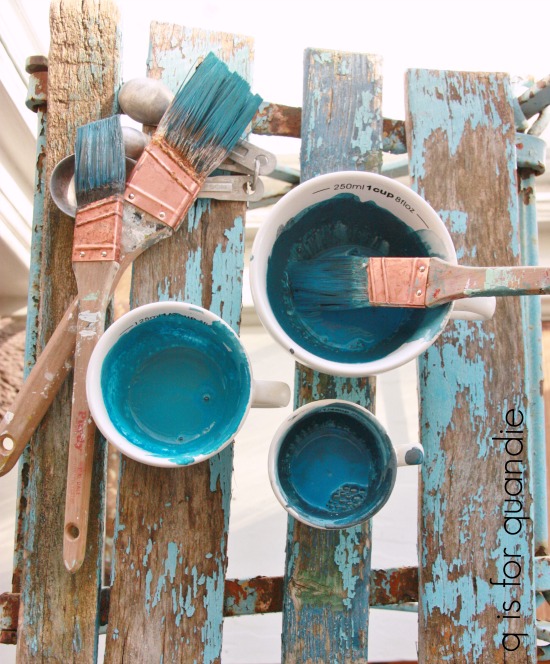
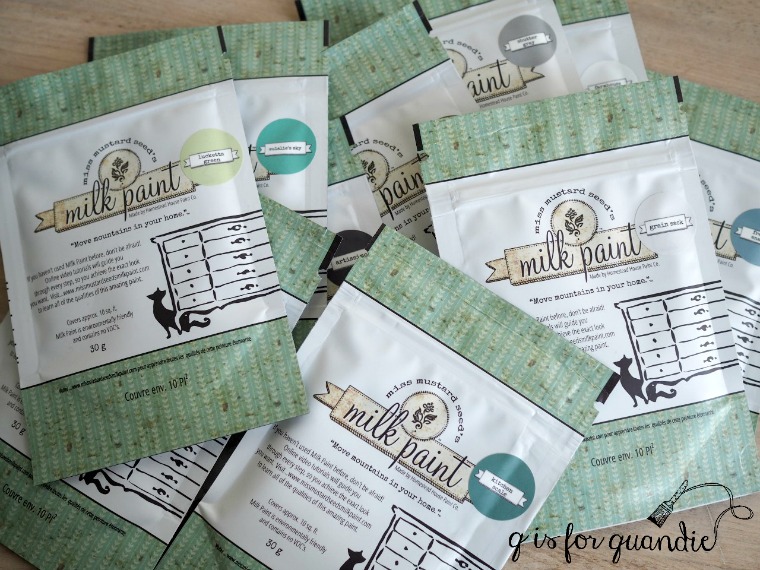
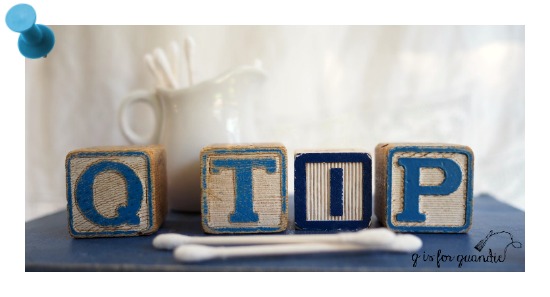

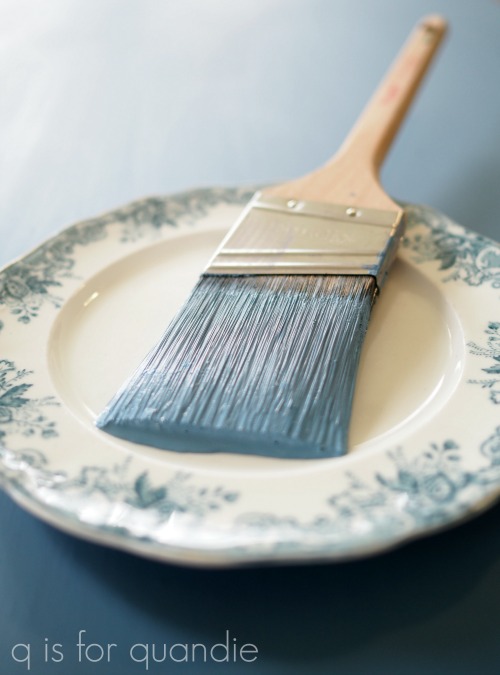

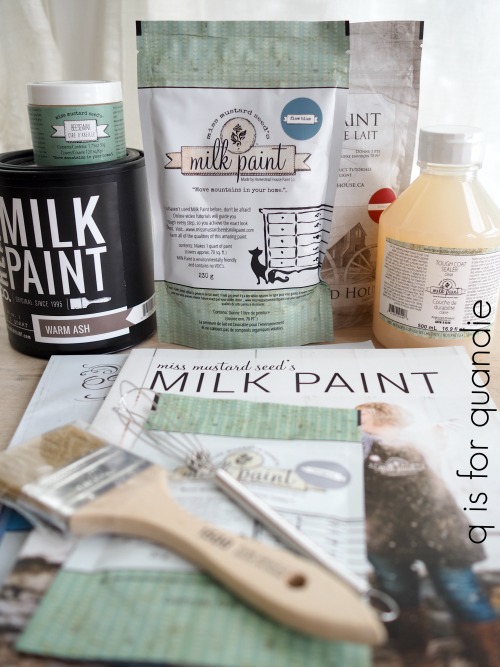

I have never tried milk paint. Thank you for this post.
LikeLiked by 1 person
I have tried milk paint and LOVE it! I have tried a bunch of mixing methods (not the marble ball tho, I’ll have to try that!). Because I’d always end up with clumps of pigment, regardless of mixing method, I have recently been using my Ninja smoothie maker and have a dedicated milk paint cup 😀 LOVE your blog!
LikeLiked by 1 person
Hi Linda, I am really looking forward to all your tipps for using milk paint. I have used several brands with different results, but always really like the kind of paint and the unexpectable results. I have no idea if this game is open for not US-citizens but if so I would be happy to win something.
LikeLike
Yes, it’s open to anyone. Hopefully I won’t go broke shipping stuff, but I don’t want to exclude anyone!
LikeLike
I have used milk paint and chipping is always a nice bonus. Always happy to get some Q-Tips along the way.
LikeLiked by 1 person
Love how you are breaking down all the steps to using milk paint! Looking forward to milk painting furniture in my future.
LikeLiked by 1 person
I just started following your blog but have been viewing it for a couple of months now. You make it look so easy. I have refinished furniture for years but have never painted any. Whole new area for me that I hope to pursue.
LikeLike
Well, you have a great head start Libby. If you have experience refinishing, painting will probably be an easy transition for you!
LikeLike
Hi Linda, Yes, I have used it many times and I’ve had successes & fails and always trying to learn new tips and tricks. Great post!
LikeLiked by 1 person
Great info about milk paint and I can’t wait to try it!! Looking forward to all your tips.. thanks for sharing!
LikeLiked by 1 person
I have tried milk paint. I still feel I have not quite mastered it. I enjoyed your post . Thanks for the details! Looking forward to the next post!
Smiles, Alice
LikeLiked by 1 person
Hello, I have not tried Milk Paint but after reading your Blog Post today , I would love too!. Please enter me in the draw and If I win I will post a before and after to you with my comments. Thanks so much for the opportunity!
LikeLiked by 1 person
Wowza, what a prize! I first used milk paint in my early 20’s on a console table. It is still the same white and I’m now using the table as a tv stand! It is unbelievably durable. I love how eco friendly it is, from the no VOC’s, to the only mixing what you need and finally the small packaging. Win/win! Thanks Linda for sharing the wealth, I’m sure you’ll get tons of comments 🙂
LikeLike
I totally agree about the eco friendly aspects of milk paint Meggan! I can’t stress that quality enough.
LikeLike
Love your Blog – I have not used Milk Paint so would love to win some and give it a try!
LikeLiked by 1 person
Gosh I want to mix up some milk paint and paint a piece of furniture right now! I totally understand what you were describing … milk paint is truly the easiest paint to use. But sadly, I’m painting walls and ceilings today …. blah blah blah … no fun until it’s done!
LikeLike
LOL, I hear that! Painting walls, and especially ceilings, is not nearly as fun as painting furniture 🙂
LikeLike
I’ve enjoyed using milk paint for the last 6 months. What amazes me about it, is that it doesn’t drip off my brush or have many drips on the piece I’m working on. Pretty cool stuff to work with!
LikeLike
You must be more skilled than I am. I have to admit I am a drippy mess when I use milk paint!
LikeLike
Less water in my mix? 😀
LikeLike
This is an awesome post! I haven’t used milk paint yet but definitely plan to! Thanks for the opportunity to win some!
LikeLiked by 1 person
Fabulous write up on a such a great paint.. as always 😉
LikeLiked by 1 person
I’m a huge fan of milk paint. So far I’ve used Miss Mustard Seed (my favorite) and Old Fashioned Milk Paint (which was fine but the coverage wasn’t nearly as good in my experience). I LOVE IT. Love love love it. Great tips – I haven’t tried the marble but I love using small mason jars to mix the paint because I can pop the lid on and use the rest another day.
LikeLiked by 1 person
Thank you so much for this post on milk paint; great tutorial and tips all in one! I have never tried milk paint but intend to. I have been following your blog (and Marian’s!) for years and am trying to get brave enough to try it. I LOVE your milk painted furniture in Typewriter and have often wished I lived local to you so that I could purchase them. I am currently painting a desk for my daughter that would have been an ideal milk paint project – it has some lovely trim – but she wanted white semi-gloss, so that’s how I am finishing it. Just finished priming, and oh, those fumes! Love the no VOC aspect of milk paint. I have a dresser that I want to paint in Typewriter, but it was my Grandparents’ and I am so afraid to ruin it! I am looking for a smaller piece to which I am not emotionally attached to start.
LikeLike
That sounds like a great plan Kim, and I always say that the Typewriter is the perfect color of milk paint for your first project with it. It couldn’t be easier to use!
LikeLike
Have not yet tried milk paint but am looking forward to it. I have a thirsty 3 drawer bureau just waiting! Thank you for the giveaway – but more importantly thank you for all the joy you give 3 days a week : )
LikeLiked by 1 person
I am prepping a piece today for MMS.
Love the Q-tips.
LikeLiked by 1 person
Thanks for the tips for mixing and painting with Milk Paint…I’ve always wanted to try it, but haven’t yet, so I’m excited about the possibility of being a prize winner!
LikeLiked by 1 person
My first milk paint project was a big kitchen hutch that I painted in Homestead House Sturbridge White. It took 5 coats! I absolutely love the way that it turned out, so 5 coats wound up being worth it. I haven’t used a darker color yet, but I’d love to. The buttery smooth finish of milk paint (once it’s been given a light sand) is just perfect!
LikeLiked by 1 person
I have never used Milk Paint before! Would love to! I have several pieces right now that would be just right for a trial run!
LikeLiked by 1 person
After reading your blog post today, you make me wonder why I’ve never used milk paint as you make it sound so easy. I guess I needed this post to make me see the light! Thanks for all the tips and instructions. You’re making it very easy for the rest of us who have been a little hesitant to try this type of paint.
LikeLiked by 1 person
I love your blog. I just found it about 3 months ago. I have always wanted to try milk paint, I don’t own any new pieces so have always painted or refinished. The colors are so rich in the milk paint lines. I especially like the Scandinavian type colors being a fellow Minnesotan, but your green mid century pieces were lovely.
Thanks for informative post, lots of great tips.
LikeLike
I like the Scandinavian type colors myself as well, and I think the milk paint really lends itself to that look nicely!
LikeLike
I have not tried milk paint. Chalk paint has been my choice for years now, but I have recently done some research on using milk paint. So I was thrilled when you announced that you would be explaining your product choices and techniques this week. I always love your finished product and thank you for the inspiration and this great giveaway.
LikeLiked by 1 person
Hi Miss Q! I was hoping to learn some milk paint necromancy today! I’ve tried MMS several times and have tried stirring, whisking, and the blender……but I still ALWAYS end up with undesolved powder at the bottom no matter what! So frustrating! Which do you do: powder or water first?
LikeLike
I usually do the water first, then the powder. But I wonder if you might like the results you get using that marble to help with your mixing.
LikeLike
Hi linda, I’ve never tryed milk paint, this is something I’ve wanted to try ever since I started going to your carriage sales, many moons ago..Haaa haaaa. I still have many items I’ve purchased. I love your talent of painting furniture and other items so hopefully this summer I will try to learn ♡
LikeLiked by 1 person
We should put some milk paint on the base of that piano stool of yours!
LikeLike
Yes I would love that thank you
LikeLike
I’ve tried milk paint – Miss Mustard Seed’s brand only. Have heard a lot about other brands but am still experimenting to decide my favorite types/brands. I do love how smooth the milk paint is, when sanded. Oh.My. And MMS wax really is so great to work with — like butter!
LikeLiked by 1 person
I’ve never used milk paint before, but then, I’m not much of a painter. However, my daughter is interested in changing the color of a new TV stand that is clashing with the paint on her walls. I thought that milk paint might be a possible solution to her dilemma, but we need info on how to work with it. I’ll be closely reading all of your posts on this subject. And I am a follower of your blog. Thank you for your helpful explanations.
LikeLike
Thanks for following Leslie!
LikeLike
Oh Linda, did you ever know you had so many creeper fans?!! We al love reading you and gaining an understanding of your gorgeous technique! This is something I will Pin for sure, thank you, you are my favorite to read in my inbox!
LikeLike
LOL, I don’t think you are creepers at all Sue 😉 I do know how many ‘followers’ I have and I often wonder how many of you are actually reading my posts and how many are sending the emails straight into the trash!
LikeLike
I have used just about every other type of paint except milk paint. I really want to try it but it is somewhat intimidating. Your post will be very helpful. Oh yeah love your blog!!!
LikeLiked by 1 person
I’m a lover of miss mustard seeds milk paint! I have used it a lot! I admit I haven’t tried any other milk paint brands, but interested in trying! Love your instructing, you can always learn something new!!
LikeLiked by 1 person
I’ve painted a number of pieces these last three years, but have yet to tru milk paint. Am tempted to do so.
LikeLiked by 1 person
I love your creativeness and that you use all different types of paint! You are awesome!
LikeLiked by 1 person
I have never tried milk paint but I am itching to try!
LikeLiked by 1 person
I am becoming a believer in milk paint but I haven’t had a chance to use it yet. We are renovating and when that is done I will be decorating with LOTS of painted furniture. Thank you for this informative blog.
LikeLiked by 1 person
I haven’t left many comments but believe me I read every post never just trashed! I haven’t used milk paint before I’ve been using chalk paint & General Finishes. I was afraid of the heavy chipping but willing to try. Love your blog!
LikeLike
Be sure to read my post on Thursday because I’ll address how to help control unwanted chipping. And thanks for not trashing me 😉
LikeLike
I have been circling my bedside table for four years! Too afraid to paint it! I think your detailed (so suits a nerdy gal like me) Milk Paint Basics post may just inspire me to Stop Thinking and START doing!. Thank you very much for sharing your knowledge.
LikeLiked by 1 person
I’ve been wanting to try milk paint. Your post is very helpful. I can’t wait to try some..
LikeLiked by 1 person
Hi, I have used MMS milk paint in the typewriter color on a small stool and a basket. Loved how they turned out! I have my grandfathers chest of drawers I would love to paint in a white milk paint, just need to get the courage to paint such a big piece. Thanks for this giveaway and all that you share.
LikeLiked by 1 person
Great info. I have been little nervous about trying milk paint but you explained it so well I think I’ll give it a try on my next project.
Missy
LikeLiked by 1 person
I have not tried milk paint but really would love to have the chance!!! Love the post on milk paint and “q tips””!
LikeLiked by 1 person
I have yet to try milk paint! I have been silently stalking facebook groups to learn more about the product 🙂 I love to paint my furniture to bring new life to them – love this option and love the fact that it is green!!
LikeLike
Well you’ve come to the right place to learn more about it Serena! And if you appreciate a green product, milk paint is the perfect choice for you!
LikeLike
I’ve pinned it for future reference. Was glad to hear it lasts a long time in the package as I’ve had Typewriter by MMS for 2 years. Maybe with your great info this week, I’ll attempt to use it.
LikeLike
Yep, as long as you’ve kept it sealed up you should be good to go. I’ve used milk paint older than 2 years old with no problem at all.
LikeLike
Thank you for your tips on Milk Paint and your give a ways. I have tried MMS milk paint and I must say I do like the effect. Now I need to master “waxing”.
LikeLiked by 1 person
Be sure to read tomorrow’s post which will include info about waxing. Not all waxes are the same, and some are much easier to use than others. I like the Fusion/Miss Mustard Seed/Homestead House waxes because they are very creamy and more soft than some of the others. Plus they don’t have the harmful ingredients that some waxes contain.
LikeLike
Thank you for all the great tips you share! I have used fusion mineral paint and several types of chalk paint but have not yet used milk paint.
I would love to give it a try after seeing all of your amazing pieces.
LikeLike
I have tried milk paint. It has been a learning process but I am starting to enjoy it very much.
LikeLike
I have only used milk paint on small decor items, but not on any major furniture pieces. I like it, but kinda a “wuss”. I need to “man up” more about painting my furniture! I am excited about reading all these informative future blogs of yours detailing all the different techniques of painting furniture. I still think you could write a book…thanks for all your fun giveaways!
LikeLike
Love milk paint. It gives an authentically old look to antiques!
LikeLike